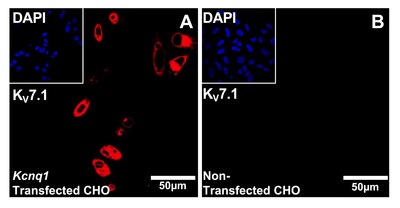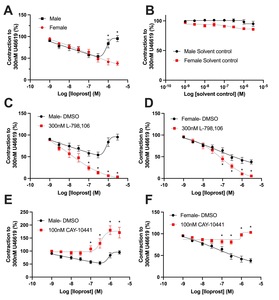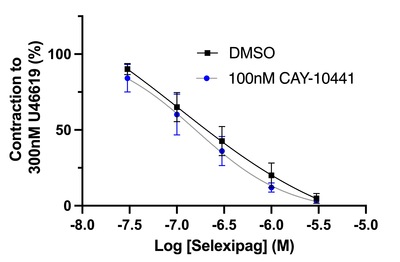Baldwin, SN; Forrester, EA; McEwan, L; Greenwood, IA
(2022)
Sexual dimorphism in prostacyclin-mimetic responses within rat mesenteric arteries: A novel role for KV7.1 in shaping IP receptor-mediated relaxation.
Br J Pharmacol, 179 (7).
pp. 1338-1352.
ISSN 1476-5381
https://doi.org/10.1111/bph.15722
SGUL Authors: Greenwood, Iain Andrew
|
PDF
Published Version
Available under License Creative Commons Attribution. Download (3MB) | Preview |
|
![[img]](https://openaccess.sgul.ac.uk/113788/13.hassmallThumbnailVersion/bph15722-sup-0001-figure_s1.jpg)
|
Image (JPEG) (Figure S1)
Published Version
Available under License Creative Commons Attribution. Download (202kB) | Preview |
|
![[img]](https://openaccess.sgul.ac.uk/113788/18.hassmallThumbnailVersion/bph15722-sup-0002-figure_s2.jpg)
|
Image (JPEG) (Figure S2)
Published Version
Available under License Creative Commons Attribution. Download (1MB) | Preview |
|
![[img]](https://openaccess.sgul.ac.uk/113788/23.hassmallThumbnailVersion/bph15722-sup-0003-figure_s3.jpg)
|
Image (JPEG) (Figure S3)
Published Version
Available under License Creative Commons Attribution. Download (246kB) | Preview |
|
![[img]](https://openaccess.sgul.ac.uk/113788/28.hassmallThumbnailVersion/bph15722-sup-0004-figure_s4.jpg)
|
Image (JPEG) (Figure S4)
Published Version
Available under License Creative Commons Attribution. Download (353kB) | Preview |
|
|
PDF
Accepted Version
Available under License Creative Commons Attribution. Download (1MB) | Preview |
Abstract
Background and Purpose Prostacyclin mimetics express potent vasoactive effects via prostanoid receptors that are not unequivocally defined, as to date no study has considered sex as a factor. The aim of this study was to determine the contribution of IP and EP3 prostanoid receptors to prostacyclin mimetic iloprost-mediated responses, whether KV7.1–5 channels represent downstream targets of selective prostacyclin-IP-receptor agonist MRE-269 and the impact of the oestrus cycle on vascular reactivity. Experimental Approach Within second-order mesenteric arteries from male and female Wistar rats, we determined (1) relative mRNA transcripts for EP1–4 (Ptger1–4), IP (Ptgi) and TXA2 (Tbxa) prostanoid receptors via RT-qPCR; (2) the effect of iloprost, MRE-269, isoprenaline and ML277 on precontracted arterial tone in the presence of inhibitors of prostanoid receptors, potassium channels and the molecular interference of KV7.1 via wire-myograph; (3) oestrus cycle stage via histological changes in cervical cell preparations. Key Results Iloprost evoked a biphasic response in male mesenteric arteries, at concentrations ≤100 nmol·L−1 relaxing, then contracting the vessel at concentration ≥300 nmol·L−1, a process attributed to IP and EP3 receptors respectively. Secondary contraction was absent in the females, which was associated with a reduction in Ptger3. Pharmacological inhibition and molecular interference of KV7.1 significantly attenuated relaxations produced by the selective IP receptor agonist MRE-269 in male and female Wistar in dioestrus/metoestrus, but not pro-oestrus/oestrus. Conclusions and Implications Stark sexual dimorphisms in iloprost-mediated vasoactive responses are present within mesenteric arteries. KV7.1 is implicated in IP receptor-mediated vasorelaxation and is impaired by the oestrus cycle.
| Item Type: | Article | ||||||||
|---|---|---|---|---|---|---|---|---|---|
| Additional Information: | © 2021 The Authors. British Journal of Pharmacology published by John Wiley & Sons Ltd on behalf of British Pharmacological Society. This is an open access article under the terms of the Creative Commons Attribution (http://creativecommons.org/licenses/by/4.0/) License, which permits use, distribution and reproduction in any medium, provided the original work is properly cited. | ||||||||
| Keywords: | 1115 Pharmacology and Pharmaceutical Sciences, Pharmacology & Pharmacy | ||||||||
| SGUL Research Institute / Research Centre: | Academic Structure > Molecular and Clinical Sciences Research Institute (MCS) | ||||||||
| Journal or Publication Title: | Br J Pharmacol | ||||||||
| ISSN: | 1476-5381 | ||||||||
| Language: | eng | ||||||||
| Publisher License: | Creative Commons: Attribution 4.0 | ||||||||
| Projects: |
|
||||||||
| PubMed ID: | 34766649 | ||||||||
| Dates: |
|
||||||||
 |
Go to PubMed abstract | ||||||||
| URI: | https://openaccess.sgul.ac.uk/id/eprint/113788 | ||||||||
| Publisher's version: | https://doi.org/10.1111/bph.15722 |
Statistics
Actions (login required)
 |
Edit Item |





